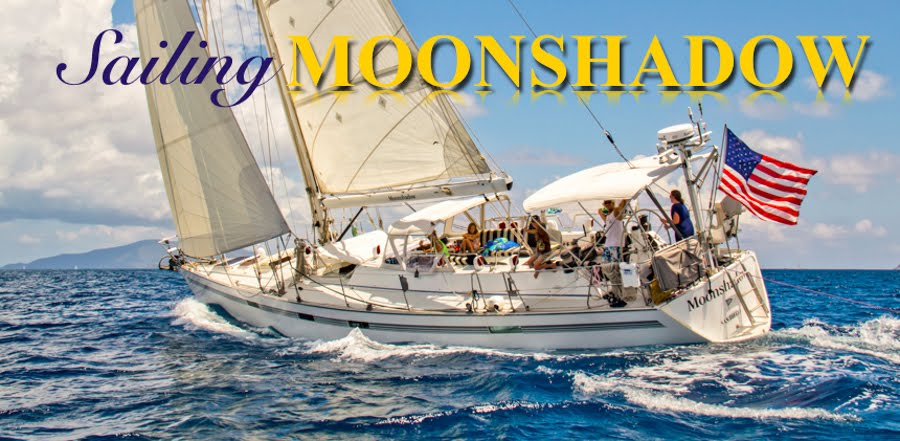HURRICANE
John cut his West Coast tour short to rush back to Portsmouth Virginia and prepare Moonshadow for whatever Hurricane Sandy might have in store.
The forecast had Sandy making landfall pretty close to Moonshadow and showed a WIDE swath of dangerous wind.
After stripping sails and canvas; rigging extra dock-lines and fenders; fitting anti-chafe gear on lines; placing boots, foul-weather gear, and flashlights in strategic places for quick excursions topside; and verifying the insurance policy premium was paid-up, there was nothing to do but watch the barometer...
...which fell 50 millibars to 970 as Hurricane Sandy hauled North along the coastline to our latitude. This is the lowest barometer reading John has ever seen, but still not as low as the center of Hurricane Sandy, which plunged to 940 millibars upon landfall.
Deb, still in California, had to reschedule her flight back to Moonshadow for two days later as most flights here were cancelled.
But here in Portsmouth, and especially at our VERY well protected floating slip at Ocean Marine Yacht Center, the most wind we had was in the mid twenties with a gust or two into the thirties.
After all the anticipation John got so bored, he suited up in his foulies and went for a walk to see how friends were faring in their nearby berthing.
The combination of hurricane storm surge and high tide brought the Portsmouth water level above the wharfs.
The trawler pictured here is "aCappella", owned by Karen and Jeffrey Siegel who run the cruising website www.activecaptain.com. We have relied on their excellent site to find anchorages, dinghy docks, marinas, fuel prices, and more since we first heard about it from another cruiser in South Carolina.
In normal times, the pilings along a wharf are high enough to tie dock lines to and to bear against with the yacht's hull using fenders and fender-boards. But here, for cosmetic reasons the High Street Mole designers cut the pilings short (note dock lines disappearing into the water), so Aussie friends Andrew and Claire Payne had to rig long lines clear across the mole, to keep their sloop EYE CANDY away from the adjacent pilings which were nearly below the waterline.
Meanwhile, at nearby Tidewater Marina where another friend, San Diego Yacht Club Staff Commodore Wytie Cable, was aboard his beautiful 47 foot trawler HAPPY, the fixed piers were a foot under water stranding anyone aboard their boats. When John arrived, the water had receded to just level with the pier's decking. Small waves caused geysers of water to explode through the gaps between the wooden planks.
Wytie shared some before-and-after photos that tell the story of the storm surge here.
By the way, Wytie's last boat was a sailboat named REALITY CHECK, which serves as a good segue to all this talk about storm surge. See, the surge here was only about 4 feet above the maximum astronomical tide. Up in New York City, where Moonshadow was happily tied to the 79th street Boat Basin just a couple of weeks ago, the storm surge was 13.5 feet. The damage there is in the millions and lives were lost.
We find ourselves profoundly fortunate to have Moonshadow here, snug, safe and sound in Portsmouth, Virginia. The news further north nearer Sandy's landfall is tragic.
Our thoughts and prayers are with those whose lives have been turned upside down by this storm.













































